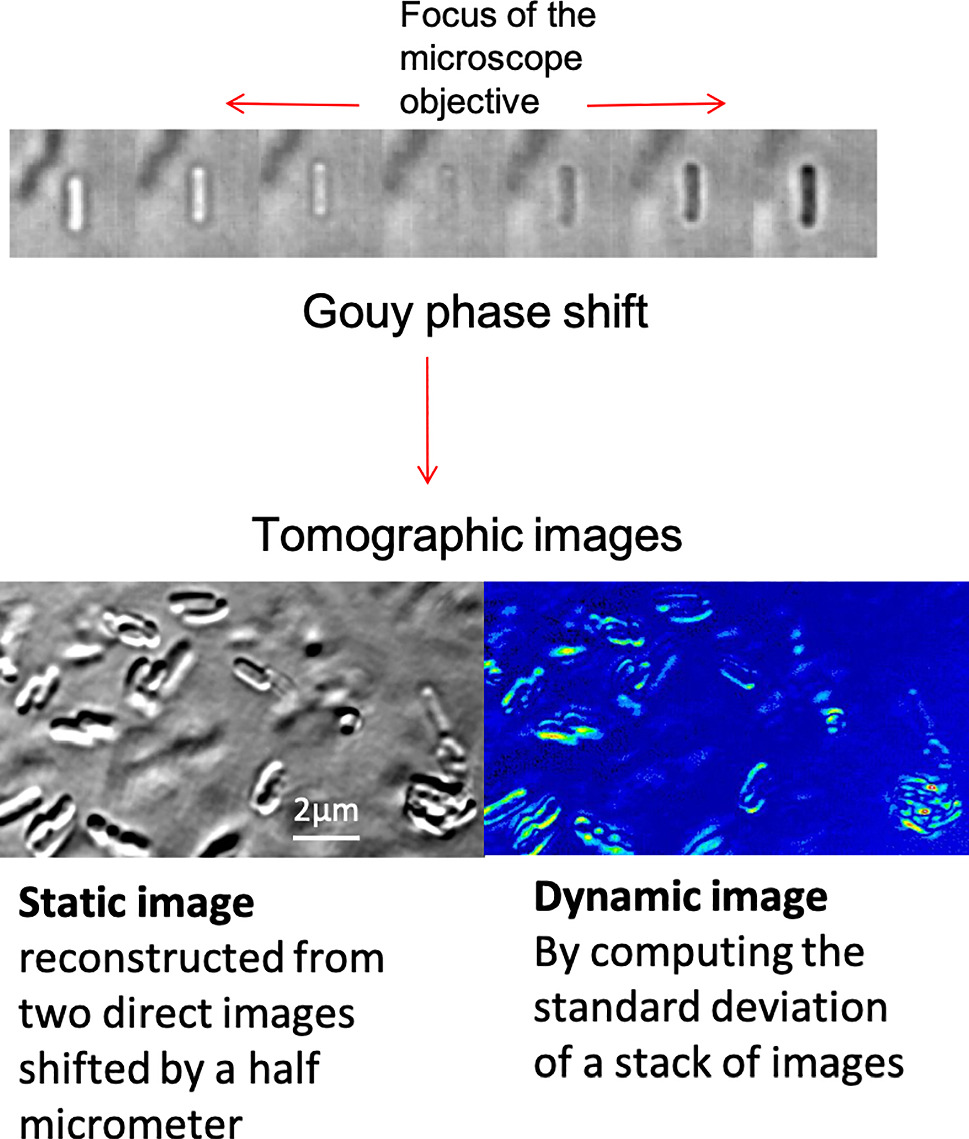https://doi.org/10.1140/epje/s10189-025-00499-y
Regular Article - Living Systems
Label-free metabolic imaging and energy costs in Chlamydomonas
1
Institut Langevin, ESPCI Paris, PSL Research University, CNRS UMR 7587, 1 Rue Jussieu, 75005, Paris, France
2
ISYEB, Muséum National d’Histoire Naturelle, CNRS, Sorbonne Université, EPHE, Université Des Antilles, 57 Rue Cuvier, 75005, Paris, France
3
Institut de Biologie Physicochimique, UMR 7141 CNRS / Sorbonne Université, 13 Rue Pierre et Marie Curie, 75005, Paris, France
Received:
16
December
2024
Accepted:
29
May
2025
Published online:
11
July
2025
We developed a label-free optical microscopy method to study movements of different frequencies and amplitudes within a cell. We use optical transmission tomography (OTT) that operates in transmission, and we record the changes of signal values of all the pixels of movies taken for a few seconds (dynamic signal). This signal is a metabolic signal in algae as it decreased in the presence of photosystem II inhibitors or when samples were illuminated at wavelengths where the photoreceptors are poorly operative. We used as model organism Chlamydomonas for which mutants are available. We used a mutant deleted of the chloroplastic gene encoding the large subunit of the Rubisco, ΔrbcL. This mutant is unable to fix atmospheric CO2 and is devoid of pyrenoid. We compared the dynamic signal between wild-type strain and ΔrbcL mutant of Chlamydomonas grown in dark condition and found it to be 5 to 10 times higher. This mutant overproduced starch, and we tempted to associate the metabolic signal to the cost in ATPeq consumption for building starch. The method is easy to implement and could be very valuable for studies of phytoplankton in situ or virus-infected cells.
Supplementary Information The online version contains supplementary material available at https://doi.org/10.1140/epje/s10189-025-00499-y.
© The Author(s) 2025
 Open Access This article is licensed under a Creative Commons Attribution 4.0 International License, which permits use, sharing, adaptation, distribution and reproduction in any medium or format, as long as you give appropriate credit to the original author(s) and the source, provide a link to the Creative Commons licence, and indicate if changes were made. The images or other third party material in this article are included in the article's Creative Commons licence, unless indicated otherwise in a credit line to the material. If material is not included in the article's Creative Commons licence and your intended use is not permitted by statutory regulation or exceeds the permitted use, you will need to obtain permission directly from the copyright holder. To view a copy of this licence, visit http://creativecommons.org/licenses/by/4.0/.
Open Access This article is licensed under a Creative Commons Attribution 4.0 International License, which permits use, sharing, adaptation, distribution and reproduction in any medium or format, as long as you give appropriate credit to the original author(s) and the source, provide a link to the Creative Commons licence, and indicate if changes were made. The images or other third party material in this article are included in the article's Creative Commons licence, unless indicated otherwise in a credit line to the material. If material is not included in the article's Creative Commons licence and your intended use is not permitted by statutory regulation or exceeds the permitted use, you will need to obtain permission directly from the copyright holder. To view a copy of this licence, visit http://creativecommons.org/licenses/by/4.0/.





